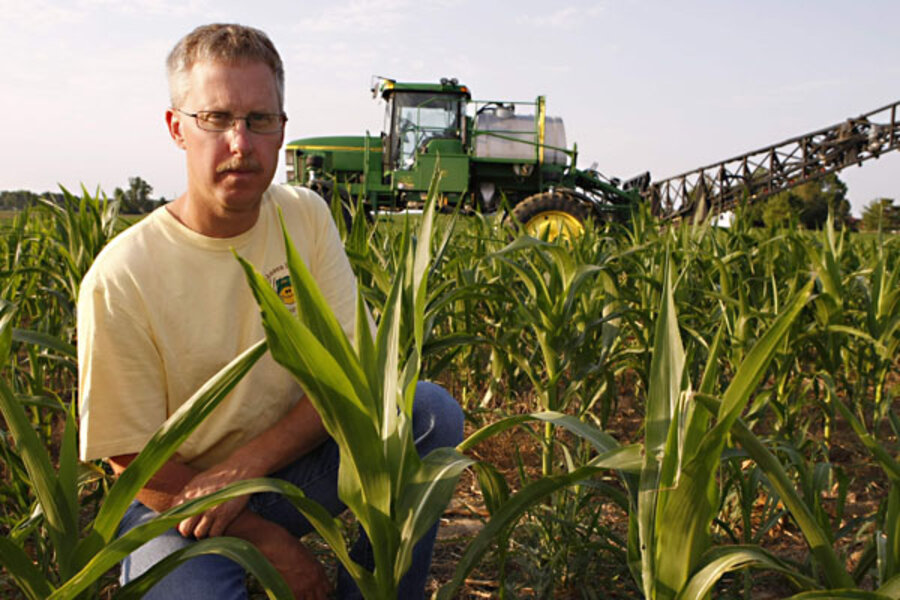Popcorn drought hits US movie theaters
| Chicago
For more than half a century, the Shew family has harvested mountains of popcorn kernels to be buttered, salted and munched by movie fans.
But as a crippling Midwestern drought sends commodity soybean and grain prices soaring, the family's farmland in west-central Indiana is suffering from a popcorn drought. Plants are listing, stalks are spindly and corn ears small.
It's an ill portent for the snack food world. All across the Midwest, where rows of popcorn normally thrive alongside fields of soybeans, U.S. popcorn farmers have watched in horror as stifling, triple-digit temperatures and weeks without rain withered crops.
"This is the worst season we've ever had," said third-generation popcorn purveyor Mark Shew, who runs the family's farm in Vigo County. "In some places, they're going to be down to counting kernels at the bottom of the storage bins."
BUYERS LINING UP
The situation has had popcorn buyers -- from small mom-and-pop shops to larger food chains -- scrambling for months to line up their supplies for this fall. Their options are limited.
Retail prices have jumped this summer: from about $20 for a 50 pound bag to $30 or higher, said Tim Caldwell, owner of Pop It Rite, an Illinois-based popcorn industry expert and snack foods consultant. Wholesale prices have started to creep up, too, he said.
The hunt for product has staff at the Weaver Popcorn Company Inc searching far and wide for supplies, said Matthew Johnson, who grows for the Van Buren, Indiana firm.
He said his grower representative told him recently company staff are wooing farmers in Louisiana and elsewhere in the South, where the growing season typically starts and ends earlier than the Midwest. They're also scouting acreage in South America, Johnson said, where farmers are preparing to plant their crops in the coming weeks.
Officials for Weaver Popcorn could not be reached for comment Friday.
HIGHER POPCORN PRICES UNLIKELY AT THEATERS
While consumers may have to pay more for the snack at the grocery store soon, some analysts say the chances of prices rising for a bucket of movie theater popcorn are slim.
"The popcorn portion of the product is a very low percentage of the price, and the prices are already so high, I think consumers would balk if they went up any higher," said Bob Goldin, director of the food supplier practice at Technomic Inc.
The popcorn industry -- which sold $985.7 million in 2010 worth of unpopped kernels, down 2.2 percent from five years earlier -- is barely an economic nibble out of the country's corn world. Most of the popcorn consumed worldwide is grown in the United States. Export demand for the fluffy, crunchy snack has been slowly rising in recent years from China and Russia.
Still, more than 80 percent of U.S. popcorn production is consumed domestically, according to research by the Ag Marketing Resource Center at Iowa State University. The Popcorn Board, an industry trade group, said Americans munch 16 billion quarts of popped popcorn a year.
Eager to feed that appetite, Midwestern farmers say they have long used popcorn, a bit player in the field, as a companion crop for filling up more marginal ground around their field corn and soybeans.
During even the toughest times popcorn can provide an economic boost for those willing to fuss over the plants, as long as the weather stays mild. But when temperatures soared, the crops withered.
The poor weather fueled recent supply concerns for popcorn buyers, said Norm Krug, chief executive officer of Preferred Popcorn, a Nebraska-based, farmer-owned cooperative that supplies popcorn to movie theaters and others.
As prices for commodity corn, used as livestock feed, and soybean hit record highs, Midwestern farmers shifted more of their land to those crops, Krug said.
That competition for land, said Krug, steadily dropped the amount of U.S. planted popcorn acreage to about 190,000 acres (76,890 hectares) last year, according to farmer surveys his group had conducted. The most recent federal data, from 2007, shows that U.S. farmers harvested nearly 202,000 acres (81,747 hectares).
Farmers may have planted even fewer acres this year, Krug said. That left fewer popcorn plants to harvest.
"Most seed growers I know are not taking new customers, because they're afraid that they won't have enough supplies to meet their current demand for their present customers in the fourth quarter," said Pop It Rite's Caldwell.
'MAY LOSE THE CROP'
In Nebraska, the nation's leading producer of the tasty yellow and white kernels, popcorn farmers with irrigation are thankful they've been spared.
"The dry land fields? Those will be pretty much zero ," said Mark McHargue, who farms 230 acres (93 hectares) of yellow popcorn in Central City, Nebraska.
In southern Wisconsin, where irrigation is less prevalent, farmers worried recent rains would have little effect on a crop that struggled through the driest planting season in decades.
And in Indiana, where sizzling weather has devastated large swaths of farmland and shortened the pollination cycle to only a few days, farmers fear strong winds from the remnants of Hurricane Isaac could flatten their already hard-hit fields.
"As you walk through the fields, you have to be careful because if you touch a stalk too hard, it will fall over," said Johnson, who farms 1,200 acres (486 hectares) of popcorn at his family's farm in Jay County, in eastern Indiana. "We get anything 30 mile an hour, we'll lose what crop we have." (Reporting by P.J. Huffstutter; Editing by Leslie Gevirtz)






